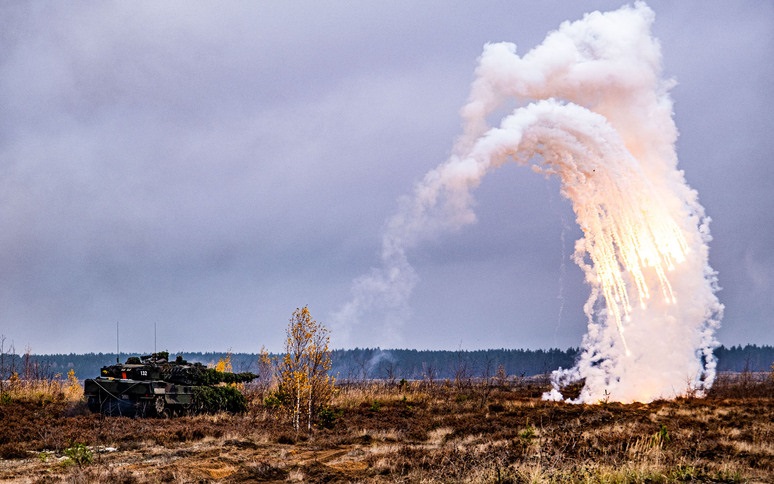The exercise is designed to maintain combat readiness of the Iron Wolf Brigade and synchronize procedures between the Lithuanian Army and Allied troops in joint operations. This year, soldiers with the Brigade and NATO’s eFP Battlegroup Lithuania employed their heavy armored equipment, including main battle tanks, infantry fighting vehicles and armored personnel carriers in a “force on force” training supported by the Lithuanian Air Force’s NASAMS (Norwegian Advanced Surface to Air Missile System) and an MQ-9 combat drone armed with Hellfire missiles remotely controlled from the United States.
Aside from combat tasks, Iron Wolf’s most recent iteration also focused on interoperability with public institutions. Joint medical evacuations by land and air were practices in cooperation with the hospital of the Lithuanian University of Health Sciences, while the Jonava city authorities were involved in a signal communication training where simulated operations were conducted.
The field portion of Iron Wolf was preceded by an intensive preparation phase, during which preliminary orders were given and positions for combat companies were reconnoitered. Deployed with the German 401st Mechanized Infantry Battalion, 1st Lieutenant Lara S., who is an S3 officer at the Battlegroup (responsible for operations planning), said: “Although our NATO partners have different procedures in staff work, we have synchronised them through daily cooperation.” As an S3 officer, she was assigned to the exercise’s forward command post alongside other multinational service members. During the ongoing battle, she briefed the Battlegroup Commander, Lieutenant Colonel Lars Neitzel so that he always had an accurate and complete picture of the situation for his decisions.
Tactical activities on the battlefield were assessed by the so-called “observer/controller teams”. Iron Wolf culminated with a counterattack on the opposing force, which conclusively proven the capability of the Battlegroup to conduct operations in concert the Lithuanian Army.






















![NATO to consider increasing, stabilising support for Ukraine [BRIEF]](https://defence-industry.eu/wp-content/uploads/2023/12/Diehl-Defence-EUR-600-million-order-for-IRIS-T-SLM-air-defence-system.jpg)




